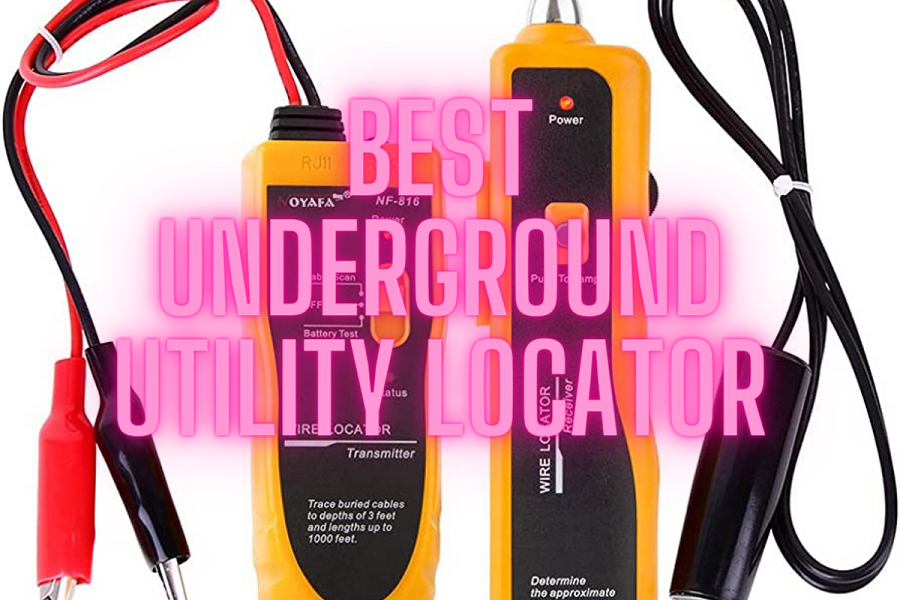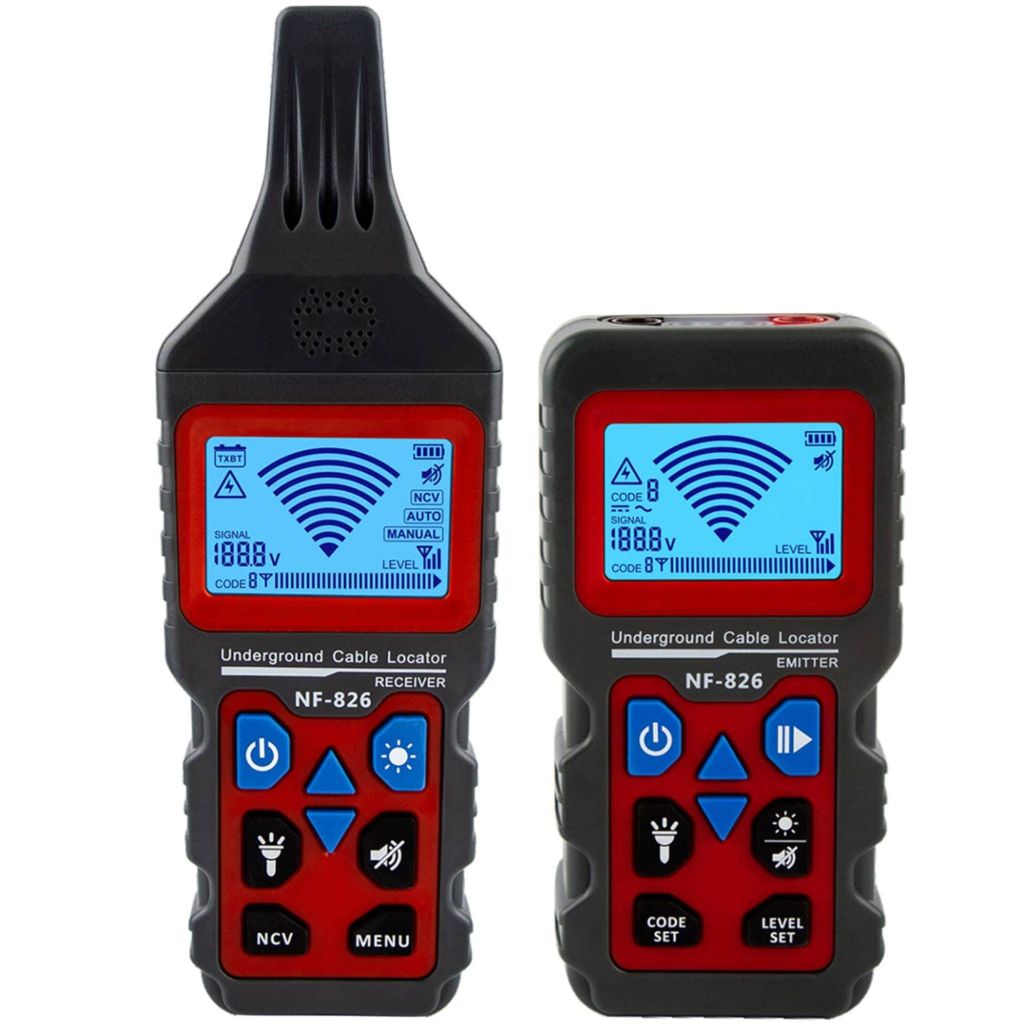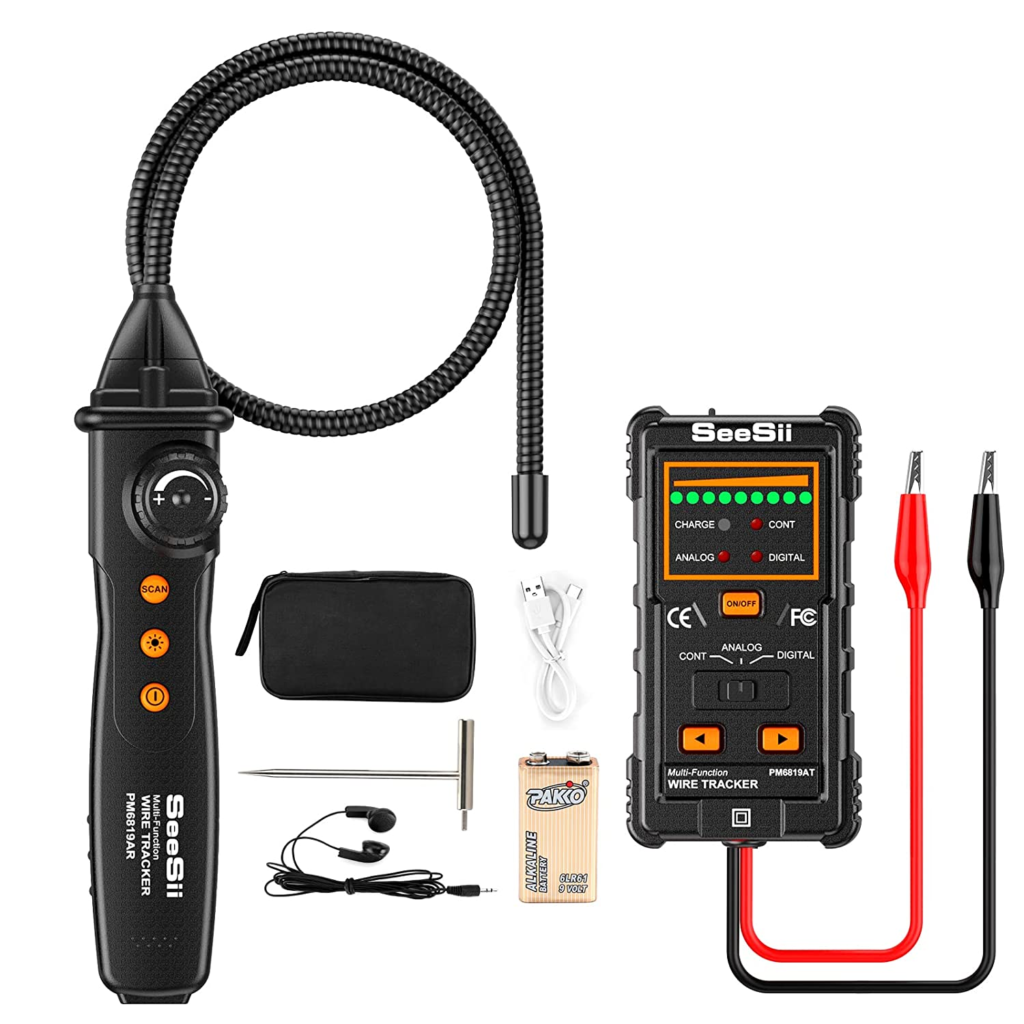Your cart is currently empty!

Top 5 Best Underground Utility Locator
Underground utility locators are devices that help in locating underground wires. These instruments help in accurately locating the path of the underground wires. They are used for finding the location of water, gas and electric lines as well as other utility lines.
The best underground utility locator instrument allows you to measure the accurate depth of the invisible underground wires and helps you locate them easily. They can be helpful if you need to dig an area or work on your lawn and want to avoid hitting something important.
There are many different types of underground utility locators available in the market today; however, some are better than others. The top 5 best underground utility locators have been listed below:
Best Underground Utility Locator
NOYAFA Underground Cable Tester Locator

The NOYAFA Underground Cable Tester Locator is a powerful tool for locating and testing underground or wall cables. With built-in DC/AC voltage meter for linear measurement, this device can detect interruptions and short circuit in cables and electrical lines, as well as detect the presence of water or gas supply pipeline paths. It also has both transmitter and receiver displays power level detected voltage type, high-voltage alert, and the ability to detect both AC and DC currents.
The NOYAFA Underground Cable Tester Locator is an essential tool for anyone who needs to test the electrical lines in their home or business.
RIDGID 19238 NaviTrack Scout Locator

The RIDGID NaviTrack Scout Locator is a lightweight and compact handheld locator that can easily solve the most challenging underground pipe and cable locations. The NaviTrack Scout locator features 4 sonde and 5 line trace modes, which gives you the ability to locate position through the micro-mapping feature. The micro-mapping feature presents on-screen markers, so you can see where your target is located in real time. The NaviTrack Scout can also be used as a hand-held unit, or it can be connected to a RIDGID waterproof remote control for greater accuracy.
The RIDGID NaviTrack Scout Locator comes with an instructional video, an operator’s manual, and 4 C-Cell batteries.
Walfront Cable Locator

Walfront Cable Locator is a professional tool for detecting electrical lines, short circuits, interruptions and hidden wires.
In addition to the sensitivity of the receiver can be adjusted either manually or automatically, it also has a transmitter built in DC/AC voltage meter for linear measurement of 12-400V DC/AC voltage.
The transmitter can be used to detect electrical lines, short circuits and interruptions in floor heating. It also locates & tracks buried and hidden wires etc.
Leica Geosystems 872941 DD130 Underground Locator

The Leica Geosystems 872941 DD130 Underground Locator is a safe way to locate underground power cables and pipes. With an automatic pinpointing feature at depths up to 33 feet, you can be sure you’re in the right place, every time. And with the power start-up test each time you turn on the unit, you’ll know that your readings are accurate and precise.
The Leica Geosystems 872941 DD130 Underground Locator also has an IP54 rating against dust and water, so it’s safe to use in all weather conditions.
Seesii Wire Tracer Detector

Seesii Wire Tracer Detector is an underground cable locator that helps you find and track buried wires. It consists of a transmitter, a receiver, and its accessories. The transmitter is made of high-quality ABS material with a buzzer alarm and an LED flashlight. The probe is simple to use and flexible; it can be bent in any direction. The detection depth is 6.5 feet, while the detection length is 3,200 feet.
The cable tracing detector has two scan modes: digital mode/analog mode. It can be used for locating underground wires such as telephone lines, gas lines, water pipes and electric cables.
FAQ
How do you use an underground wire locator?
To use an underground wire locator, you will need to follow these steps:
- First, make sure that you have the right equipment. You will need an underground wire locator, which typically consists of a transmitter and a receiver. You may also need a ground stake if the locator requires one.
- Choose the right frequency to use based on the type of wire you are looking for. Most locators have different frequencies that can be adjusted depending on the type of wire you are trying to locate.
- Connect the transmitter to the wire you are trying to locate. This can usually be done by connecting the transmitter to the wire using alligator clips or other connectors.
- Turn on the transmitter and set the frequency to the appropriate level.
- Move the receiver over the area where the wire is located. The receiver will usually emit a tone or other signal when it detects the wire. You may need to adjust the frequency or sensitivity of the receiver to get the best results.
- Mark the location of the wire so that you can find it again later. You can use flags or other markers to indicate the location of the wire.
- Once you have located the wire, you can dig carefully around it to expose it without damaging it.
It’s important to note that underground wire locators can be complex tools, and it may take some practice to use them effectively. It’s also important to follow all safety precautions when using them, as they can be dangerous if not used properly.
What tools does a utility locator use?
A utility locator typically uses a variety of tools to locate underground utilities, including:
- Ground penetrating radar (GPR): This tool uses radar waves to detect and map the location of underground utilities, including pipes, cables and other infrastructure.
- Electromagnetic locators: These tools use electromagnetic signals to locate underground utilities. They can detect the presence of metal, plastic or other materials that conduct electricity.
- Metal detectors: These devices are used to locate metal pipes and other underground infrastructure that may not be detectable by other means.
- Pipe and cable locators: These tools are used to locate specific types of underground utilities, such as pipes or cables. They are often used in conjunction with GPR or electromagnetic locators.
- Sonar equipment: Sonar equipment uses sound waves to map the location of underground utilities. It is particularly useful for locating pipes and other infrastructure that is not conductive.
- GPS and mapping software: Utility locators often use GPS technology and mapping software to accurately map the location of underground utilities and create detailed reports.
- Shovels, picks, and other digging tools: While not technically a tool, digging tools are still an essential part of a utility locator’s toolkit. They are used to physically excavate the ground and expose underground utilities.
Can you use a metal detector to find underground wires?
While metal detectors are useful for detecting metal objects buried underground, they may not be the best tool for locating underground wires. This is because wires are often made of non-ferrous materials like copper or aluminum, which do not register on most metal detectors.
Instead, professionals typically use specialized equipment like cable locators or ground penetrating radar (GPR) to locate underground wires. These tools are designed to detect signals emitted by the wires or to create a detailed image of the underground environment, allowing for accurate identification of the location and depth of buried wires.
It is important to note that attempting to locate underground wires without proper training and equipment can be dangerous, as it may involve digging or drilling near live electrical wires. If you suspect that there are underground wires on your property that need to be located, it is recommended that you contact a licensed electrician or utility company to perform the necessary work.
How does a underground pipe locator work?
An underground pipe locator is a device used to locate underground pipes and cables without disturbing the ground. It works by sending a signal through the ground, which is then picked up by a receiver. The receiver then indicates the location of the underground pipe or cable by emitting a signal, either audibly or visually.
There are different types of underground pipe locators available, but most of them work on the principle of electromagnetic induction. This involves sending an electrical current through the ground, which induces a magnetic field around any conductive material, such as a metal pipe or cable. The receiver can then detect this magnetic field and use it to locate the pipe or cable.
To use an underground pipe locator, the first step is to connect the transmitter to the pipe or cable. This is typically done by attaching a clamp to the pipe or cable and connecting it to the transmitter. The transmitter then sends a signal through the pipe or cable, which creates a magnetic field around it.
The receiver is then used to detect the magnetic field and locate the pipe or cable. The receiver is typically held close to the ground and moved around the area where the pipe or cable is believed to be located. When the receiver detects the magnetic field, it emits a signal that indicates the location of the pipe or cable.
Some underground pipe locators also have the capability to detect other types of underground utilities, such as gas lines and water mains. This is typically done by adjusting the frequency of the signal sent by the transmitter, which allows the receiver to detect different types of materials.
Conclusion
Overall, an underground pipe locator is a valuable tool for anyone who needs to locate underground utilities without causing damage to the ground or disturbing the surrounding area. It is a safe and effective way to locate pipes and cables, and can save time and money in the long run by avoiding costly repairs and replacements.
If you’re looking for the best underground utility locator, these are some of our favorites. They all have their own unique features that make them stand out from the rest. However, there are many other options out there as well so don’t be afraid to try something new if one doesn’t work for you!
Leave a Reply